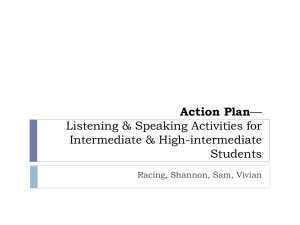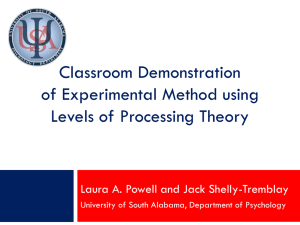Phonemic Awareness Interventions
advertisement
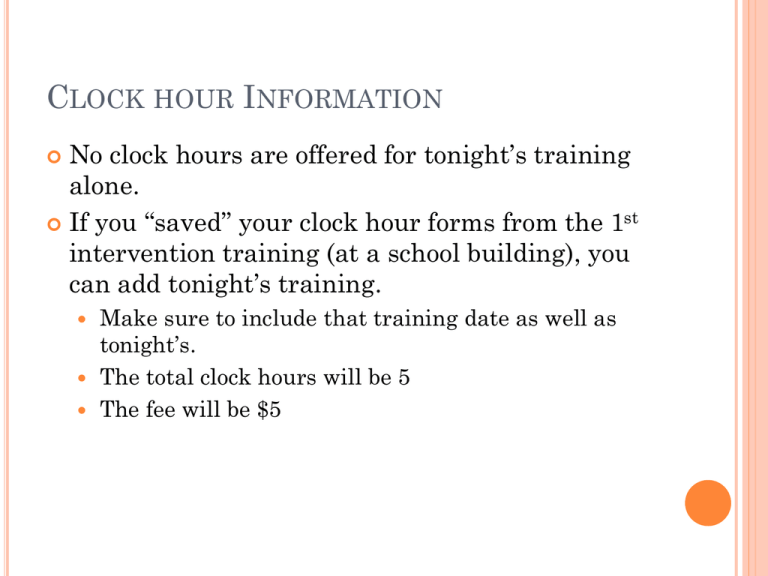
CLOCK HOUR INFORMATION No clock hours are offered for tonight’s training alone. If you “saved” your clock hour forms from the 1st intervention training (at a school building), you can add tonight’s training. Make sure to include that training date as well as tonight’s. The total clock hours will be 5 The fee will be $5 PHONEMIC AWARENESS INTERVENTIONS Vocabulary Makiing Meaning Strategies ELI Strategies and Reading Street ELI Strategies Reading Street Vocab Book Fluency Making Meaning strategies Skill Builders ELI Strategies and Reading Street Phonics 6 minute solution Templates Phonics for Reading ELI Strategies and Reading Street Syllaboards Phonemic Awareness SIPPS Road to the Code Templates ELI Strategies Road to the Code Phonemic Awareness in young Children SIPPS Beginning Template Reading Intervention Materials Training Matrix All Staff: Diagnosing and identifying Reading Problems Using the Diagnostic Tool/I've Dibeled Now What? Comprehension LEARNING TARGETS I know why phonemic awareness is important. I can choose from a menu of material to find phonemic awareness activities. I know which activities promote phonemic awareness development in children. WHAT IS PHONEMIC AWARENESS? Phonemic Awareness is something you can do in the dark. Is a primary indicator of early reading success Is acquired through a continuum of skills Needs to be taught explicitly first, then in context National Reading Panel, 2000 and Snow, et al, 1998 Helps students understand that spoken language is made up of separate words, words are made up of syllables, and words can be broken down into separate sounds, Helps students read and spell words, Helps students grasp how the alphabetic system works, Helps students move from sounds to letters (preparation for phonics instruction). WHY TEACH PHONEMIC AWARENESS? Helps children learn to read Help children learn to spell Facilitates children’s learning of the alphabetic principle by drawing their attention to the sounds that are related to individual letters. HOW DO WE TEACH PHONEMIC AWARENESS? Manipulate phonemes by using the letters of the alphabet. Focus on only one or two types of phoneme manipulation, rather than several types. Skill learning takes place prior and during reading instruction. HOW WE TEACH PHONEMIC AWARENESS Blending Segmentation Rhyming Phoneme Counting Phoneme Deletion What word is this …/sh/ /oe/? What sounds do you hear in bus? What rhymes with cat? How many sounds are in the word box? What is left if the /t/ sound were taken from cart? TEMPLATES JOE TORGESEN, PH.D., DIRECTOR OF THE FLORIDA CENTER FOR READING RESEARCH Instruction must be made more powerful for students at risk for reading difficulties. More powerful instruction means: Clear and more detailed explanations More systematic instructional sequences More opportunities for guided practice More opportunities for error correction and feedback Working Memory and Automaticity—when you are working on fluency of any sort, you are laying structures to improve comprehension! EFFECTIVE INSTRUCTIONAL TECHNIQUES Unison choral response Signaling Pacing Monitoring Correcting errors and teaching to mastery All designed to eliminate teacher talk and increase student response! TEMPLATES FOCUSING ON PHONEMIC AWARENESS Template 5 Template 6 ROAD TO THE CODE WHAT IS ROAD TO THE CODE? Series of activities in 44 lessons Can be used with heterogeneous or homogeneous groups Helps students develop the awareness that spoken words can be segmented into phonemes. Teacher judgment determines the pace of the lessons: if your kids need more time, take more time. Each lesson takes between 15 and 20 minutes. Road to the Code should not replace your Read Well instruction. GETTING STARTED Review the lessons and read the introduction Some lessons don’t include directions. They are routine at this point, so directions are included in earlier lessons. Each lesson has 3 parts 1. 2. 3. Say it and move it Letter names and letter sounds Activity to reinforce phonological awareness If you need to shorten a lesson, leave out steps 2 or 3, but keep Say it and Move it for every lesson. Read teacher notes (located on left hand side of each lesson) PREPARE MATERIALS BEFORE THE LESSON Disks, tiles, cubes, blocks, or buttons for say it and move it Puppet (Fix it activities) Fishing pole (or stick with string) for Let’s Fish activity Paper bags for Post it Activities Letter picture cards (at the back of the book) OTHER THINGS TO KNOW Program uses short vowels /a/ as in apple /i/ as in igloo /o/ as in octopus /u/ as in umbrella /e/ as in edge Letters between slanted lines tell you it’s the sound. Letters underlined tell you it’s the letter name. When you see sentences in bold, it tells you suggested dialogue with students. MANIPULATIVES Teach students how to use manipulatives Use one finger to move objects Store manipulatives on the picture portion of the Say it and Move it sheet. ROAD TO THE CODE LESSON Model Say it and move it Elkonin cards ROAD TO THE CODE LESSON Your turn Say it and move it /a/ Am It Fit Lit Elkonin cards PHONEMIC AWARENESS IN YOUNG CHILDREN COMPONENTS OF PHONEMIC AWARENESS IN YOUNG CHILDREN This program uses games to promote phonemic development. Listening Games Rhyming Games Words and Sentences Awareness of Syllables Initial and Final Sounds Phonemes Introducing Letters and Spelling COMPONENTS OF PHONEMIC AWARENESS IN YOUNG CHILDREN Phonemic challenges are presented in gradual step by step progression. New challenges building on those previously used User friendly Lesson components Objectives Explanations Any cautions Assessment In the back Will help you identify students with phonological needs Assess how students are progressing with the program COMPONENTS OF PHONEMIC AWARENESS IN YOUNG CHILDREN Common American English Consonants and Vowels (pg 133) Suggested Kindergarten Pacing guide (pg 137) Suggested 1st grade Pacing guide (pg 145) Calendar to track lessons in the pacing guide Bibliography of rhyming stories SIPPS BEGINNING PHONEMIC AWARENESS IN SIPPS BEGINNING The essential section in SIPPS that focuses on Phonemic Awareness is Phoneme Play. Phoneme Play is at the beginning of each lesson PHONEME PLAY Oral Blending of Syllables and Words Model Your Turn “Put them together” e/raser Pa/per Black/board Win/dow Pen/cil Class/room PHONEME PLAY Phoneme Recognition Model Your Turn “Say /s/ when you hear /sss/.” Song Mud Look Mess Sick Him Wet EXIT SLIP Please reflect on tonight’s learning targets as you fill out the exit slip. I know why phonemic awareness is important. I can choose from a menu of material to find phonemic awareness activities. I know which activities promote phonemic awareness development in children.
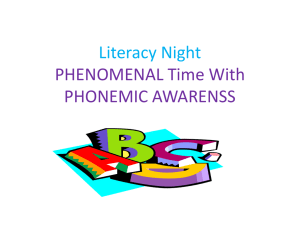
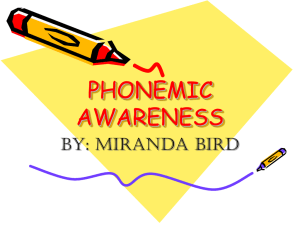
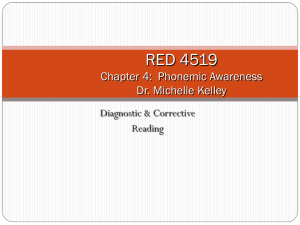
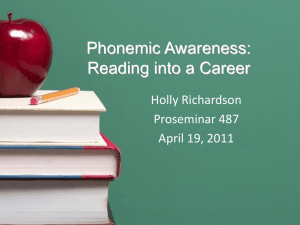
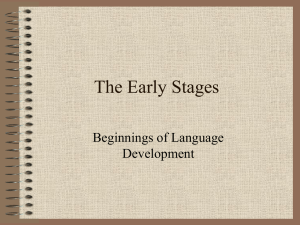

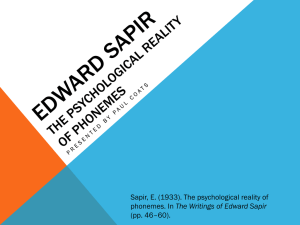
![Class 4-F14[S]](http://s2.studylib.net/store/data/005427229_1-e7cba3e8ef15cd845d7d3c4430f0fa31-300x300.png)
